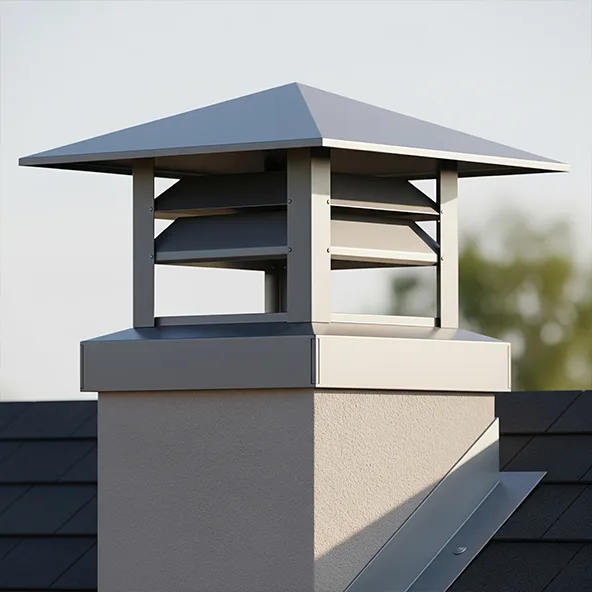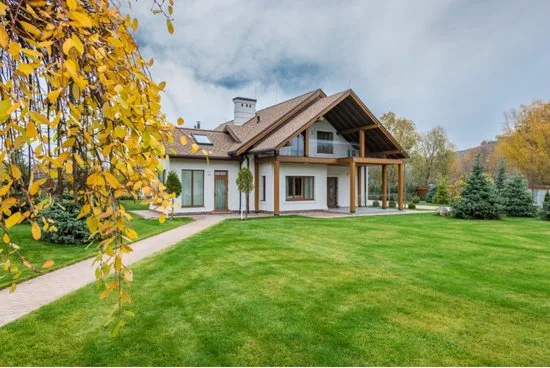Chimneys may seem like simple brick structures poking out from the roof, but their role in home safety, airflow, and energy efficiency is far more complex.
Whether you’re using your fireplace or not, your chimney still needs attention. One of the most important elements in protecting and preserving your chimney is proper capping chimney ventilation.
A chimney cap, when properly installed, can prevent many common issues such as moisture buildup, animal entry, and structural deterioration. If you’re a homeowner with an unused chimney or one that hasn’t been checked in years, this guide will walk you through the essentials—from how chimney systems work to the best materials and maintenance tips.
Why Chimney Ventilation Matters
Chimneys aren’t just about smoke. A well-functioning chimney system relies on proper ventilation to keep airflow steady, reduce condensation, and manage the temperatures inside the flue. Without proper venting, your chimney becomes vulnerable to a host of problems, especially if it’s a capped chimney or a chimney stack no longer in regular use.
Blocked or restricted airflow leads to condensation inside the chimney pipe, which can deteriorate the bricks, cement, and chimney crown. Over time, the trapped moisture causes snow and rain to soak into the walls of your house, leading to mold growth, odors, and even structural damage.
The Purpose of Capping a Chimney
Capping chimney ventilation is about more than just putting a lid on it. The cap helps ventilate the chimney while acting as a shield against debris, small animals, and harsh weather. It balances protection with necessary airflow.
For unused chimneys, a chimney cap becomes even more critical. Without it, rain, snow, and even small animals like birds and squirrels can enter the flue, leading to clogs, nests, and even pest infestations inside your home.
By using a cap with mesh, you allow the chimney to breathe while keeping out blockages. This venting system also prevents dangerous pressure buildup or backflow of gases from the fireplace, which can cause smoke to flow back into your house.
Choosing the Right Chimney Cap Material
When selecting a chimney cap, the materials matter. Some homeowners choose galvanized steel due to its affordability, but while it may save money upfront, it tends to rust and corrode faster than other options. This is especially true in wet climates where rain and snow are common.
If you’re looking for something more durable, stainless steel or copper are top choices. Copper chimney caps offer a beautiful aesthetic and excellent longevity, developing a natural patina over time. Stainless steel caps are another reliable choice, known for resisting corrosion and withstanding extreme temperatures.
Each material has its pros and cons, but the most important factor is that it’s properly installed to fully cover the chimney pot and chimney crown, and allow proper ventilation through the mesh.
How Capping Helps Prevent Moisture and Debris Damage
Moisture is one of the most destructive forces for any chimney. When rain seeps into the chimney stack or down the chimney pipe, it doesn’t just stay there. It drips down, soaking the single bricks, mortar, and surrounding areas, sometimes even reaching the interior walls of your house.
In colder months, this moisture freezes and expands, damaging the chimney crown and creating cracks in the stack. Left unaddressed, these cracks grow wider and can lead to severe structural issues or total failure of the chimney.
By placing a cap on top and adding mesh, you protect the chimney from falling debris like leaves, twigs, and trash while still allowing air to flow. This is particularly helpful for older chimney systems that weren’t originally designed with modern ventilation features.
Maintaining a Capped Chimney
A capped chimney still needs regular chimney maintenance to function properly. Many homeowners make the mistake of thinking a chimney cap is a one-time fix. In reality, even the best chimney cap will wear down over time, especially in areas with frequent snow or rain.
Here’s what a solid maintenance routine looks like:
Annual inspections to check for rust, corrosion, or damage to the mesh
Ensuring the chimney cap hasn’t been dislodged by wind or animal activity
Cleaning the chimney pipe and flue to remove any built-up debris
Inspecting the chimney crown and surrounding cement for cracks or gaps
If you’re using the fireplace, make sure the chimney is ventilated properly to allow smoke and gas to exit the house without obstruction.
Special Considerations for Unused Chimneys
If you have an unused chimney, ignoring it can turn it into a hidden hazard. Over time, these chimneys often become blocked with debris, or worse, collapse internally due to unchecked moisture damage.
Even though it’s not in use, an unused chimney still needs a way to breathe. That’s where a capped chimney with ventilation comes in. Rather than completely sealing off the flue, which can trap moisture and create a musty smell, a ventilated cap allows air to flow while preventing rain, snow, and animals from getting in.
This strategy helps preserve the integrity of the chimney stack while minimizing long-term repair needs.
Avoiding Common Mistakes
Many homeowners unknowingly make mistakes with their chimney maintenance. Here are a few things to avoid:
- Using poor-quality materials like thin galvanized steel that rusts quickly
- Blocking ventilation completely instead of using a vented cap
- Skipping inspections, especially after storms or a long winter
- Letting debris accumulate around the chimney crown and cap
- Ignoring cracks in the cement or bricks, which worsen over time
These oversights can lead to blocked flues, damaged chimney stacks, and even water intrusion into the walls or roof of your house.
Final Thoughts
Properly capping chimney ventilation isn’t just about avoiding inconvenience—it’s a proactive step toward protecting your house. Whether you have a working fireplace or an unused chimney, the right chimney cap, routine chimney maintenance, and proper ventilation go a long way in ensuring the longevity of your entire roofing system.
Choose the right materials, inspect the cap and chimney pipe annually, and don’t underestimate the power of airflow in keeping your chimney dry, clean, and structurally sound. For peace of mind and a safer home, taking care of your chimney is just as important as any other part of your house.

